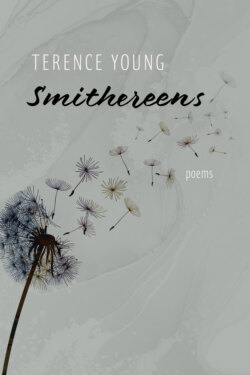Читать книгу Smithereens - Terence Young - Страница 2
На сайте Литреса книга снята с продажи.
ОглавлениеThese poems look with a steady eye, alert to enchantment and lost time, and to the human understanding and tenderness that follow.
—David Zieroth, author of the bridge from day to night
Terence Young awakens the extraordinary in everyday things, turning them into “shining artifacts of memory”—to use a phrase he quotes from Leonard Cohen. His mother’s silver cigarette case, for example—his poems, like that cigarette case, can snap shut on the sadness and wonder of many things. Being a householder, a husband, a son, a father, and a grandfather, who sails far into these sensitive seas with his burden of loss, not bearing it like an albatross around his neck, but as a lantern of insight into conditions and concerns that are his, but common to us all. He is a master of that narrative edge in poetry and plain, but weighty language, which can carry those concerns, however light or heavy and follow every simple, but resonant detail till it cuts to the quick of a family crisis, quandary, or fondly recalled moment together with his son, his daughter, or his wife. It is not often we hear a poet tell so well the exhausting wonder of being a parent or who can look two ways at it, both as a son, and as a father. He peers just as perspicaciously both ways from the past into the present and the present into the past. Uncannily, it works like second sight. Smithereens is blessed with it.
—George McWhirter, joint winner of the Commonwealth Poetry Prize for Catalan Poems
In his new collection Smithereens Terence Young’s exquisite attention to detail collapses the distance between past and present bringing a startling immediacy to the work. Kaleidoscopic in nature, these poems transform the ordinary into the extraordinary. There is a deep affection at the heart of this book. With a backward glance, Young invokes a powerful history of the present.
—Eve Joseph, author of Quarrels
Terence Young’s new collection is a valuable one: it is poetry you can fully trust. The respect for language, for experience—and the exemplary lacing together of the two across a rich range of emotion—are evident again and again in Smithereens. It is a collection to keep close at hand, a document of earned imaginative life, a fine lyrical record of how “what remains sings to us.”
—Russell Thornton, author of The Broken Face
In Terence Young’s long-awaited third book of poems, a four-year-old boy takes delight in blowing dandelion fluff to “smithereens,” blissfully unaware that this is what time shall do to his life—and does to all our lives, even as they continue to unfold around us in the forward-moving inevitability of being lived. Young attempts less to reconstruct a life, or lives, well lived than to enact a kind of verbal psychometry. With a mental acuity that verges on the tactile, he carefully holds what evidence that remains—or as he puts it so aptly, the “alchemical symbols of / our confraternity / with impermanence”—in his mind and reads the resonances it gives off as best he can. Let me be the first to say that this poet’s “best” is unerringly superlative. In these observant, at turns sardonic and tender poems about middle age (and, dare I say, slightly after), the fallout of how we humans tend to live is all around us. Young’s remarkable achievement is to welcome such rich debris, sans the usual Proustian anguish, into our indebted present.
—John Barton, author of Lost Family
The metaphors and deep feelings that jump out from behind everyday trees in Smithereens are like children who “hide in plain sight, crying surprise, surprise.” Young’s second book of poetry since his Governor General’s Award nomination includes vivid and playful evocations of blowing dandelion seed, snapping a photo, a quince tree growing wild; small events enlivened by interiority, serious refection, and yes, surprise.
—Cornelia Hoogland, author of Cosmic Bowling (with Ted Goodden)
From the young son’s turn away from his father in “Blue Pontiac” to vultures rising from the brush in “Gathering,” the poems in Smithereens are epiphanies on the move. Young’s thinking process is an opening up of the close observation of an object, or a moment, into story, which is already a version of what was. The quotidian is everything even as it vanishes into memory.
—Patrick Friesen, author of Outlasting the Weather
